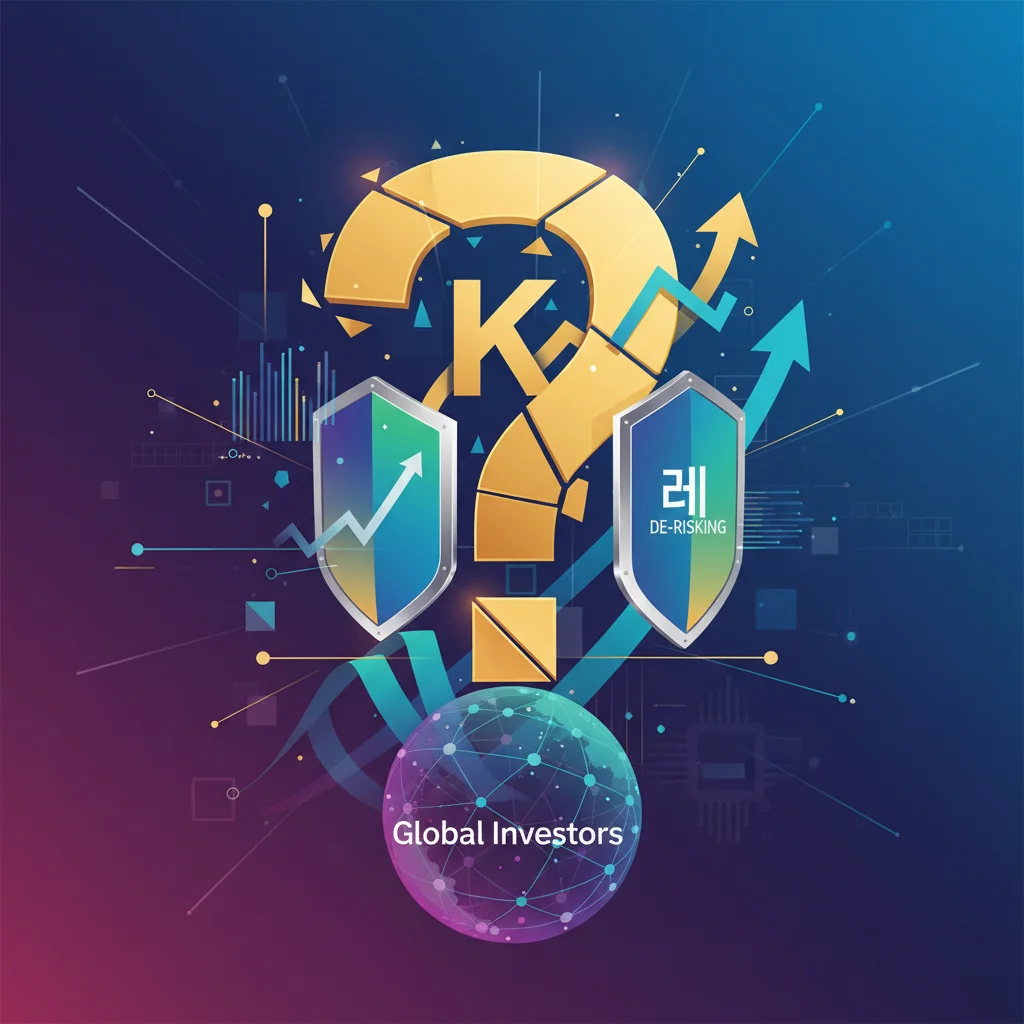
The Billion-Dollar Question: De-Risking the “K” in K-Beauty for Global Investors
The Unbundling of a Global Phenomenon
The global beauty industry has been captivated by a multi-billion dollar wave originating from South Korea. K-beauty, a term that once signified innovative skincare products exclusively from the peninsula, has evolved into a global economic powerhouse. Characterized by intricate multi-step routines, novel ingredients like snail mucin, and cutting-edge formulations, it has reshaped consumer habits worldwide. The financial ascent has been staggering; the global K-beauty market is projected to surge past $20 billion by 2030, making it a darling of the stock market and a key pillar of the South Korean economy.
However, a fundamental shift is underway, presenting a complex puzzle for investors, business leaders, and financial analysts. The geographical anchor of K-beauty is lifting. As reported by the BBC, a growing number of brands synonymous with the K-beauty philosophy are now manufacturing their products outside of South Korea. This strategic pivot, driven by the cold logic of economics and supply chain optimization, raises a critical question: Does K-beauty lose its value—both tangible and intangible—when it’s no longer Korean-made? This isn’t just a question of branding; it’s a high-stakes test of intellectual property, brand equity, and the very definition of “authenticity” in a globalized marketplace.
From Cultural Export to Global Supply Chain: The Economic Rationale
The decision to move manufacturing offshore is not a whimsical one. It’s a calculated move rooted in sound financial and operational strategy, designed to bolster margins, improve market responsiveness, and navigate the complexities of international trade. For business leaders and those involved in finance and investing, understanding these drivers is key to evaluating the long-term viability of these brands.
The primary motivations can be broken down into several key economic factors:
- Cost Arbitrage and Operational Efficiency: Manufacturing in regions with lower labor and operational costs can significantly improve a company’s bottom line. This allows brands to either offer more competitive pricing in crowded markets or reinvest savings into research, development, and marketing—all factors that drive stock market performance.
- Supply Chain Optimization: Producing goods closer to their largest consumer bases, such as North America or Europe, drastically reduces shipping times and logistics costs. This “near-shoring” strategy mitigates risks associated with global shipping disruptions and allows for a more agile response to fast-changing consumer trends—a crucial advantage in the fast-fashion-esque world of beauty.
- Tariff and Trade Barrier Navigation: By establishing manufacturing hubs within specific economic blocs, companies can circumvent hefty import tariffs. This is a classic economics play to improve market access and price competitiveness, directly impacting revenue and profitability.
- Access to Localized R&D and Ingredients: While South Korea remains an innovation hub, setting up facilities abroad can provide access to unique local ingredients and R&D talent, potentially leading to new product lines tailored for specific demographics.
To illustrate the strategic trade-offs, consider the following comparison for a hypothetical K-beauty firm evaluating its manufacturing options.
| Factor | Manufacturing in South Korea | Manufacturing Overseas (e.g., Eastern Europe/USA) |
|---|---|---|
| Brand Authenticity | High; “Made in Korea” seal is a powerful marketing tool. | Potentially diluted; requires significant marketing to maintain “K-beauty philosophy” narrative. |
| Production Costs | Higher labor and operational costs. | Generally lower, leading to improved gross margins. |
| Supply Chain to Western Markets | Longer lead times, higher shipping costs, vulnerable to disruption. | Shorter lead times, lower logistics costs, greater agility. |
| Access to Innovation | Direct access to the epicenter of K-beauty R&D and supplier network. | Requires investment to replicate R&D capabilities; potential for localized innovation. |
| Trade & Tariffs | Subject to import duties in key markets like the US and EU. | Can bypass certain tariffs by producing within a trade bloc. |
This table clarifies that the decision is a classic business school case study in balancing brand equity against operational efficiency. For investors, the key is to determine which companies can manage this transition without alienating their core customer base. The £2.1 Billion Keyboard Stroke: How a Cyber Attack Became the UK's Costliest Financial Disaster
Investing in an Idea: The Financialization of Authenticity
For the financial community, this trend transforms K-beauty from a simple consumer goods story into a complex analysis of intangible assets. The term “K-beauty” itself is an incredibly valuable piece of intellectual property. The question is, who owns it, and how is its value sustained when its definition becomes fluid?
Investors and private equity firms eyeing the sector must now ask more nuanced questions:
- What are we actually buying? Are we investing in a Korean manufacturing process or a globally recognized R&D philosophy? The valuation models for these two scenarios are vastly different.
- How durable is the brand equity? A brand’s value is tied to consumer perception. If consumers begin to feel that non-Korean-made products are inauthentic, the brand’s value could plummet, impacting stock market prices and investor returns. Monitoring social media sentiment and brand perception metrics is now as important as analyzing a balance sheet.
- Who captures the value? As Western giants like L’Oréal and Estée Lauder acquire K-beauty brands or launch their own “K-beauty inspired” lines, a significant portion of the financial upside is repatriated outside of the South Korean economy. This has macroeconomic implications for South Korea’s export-driven growth model.
This is where the conversation expands into sophisticated financial technology and strategy. The authenticity of a product, once a matter of trust, is becoming a verifiable data point. The £2.1 Billion Breach: How the Jaguar Land Rover Hack Rewrote the Rules of Financial Risk
Blockchain and FinTech: The New Guardians of Brand Integrity
How can a brand prove its “K-beauty soul” resides within a product made in Poland or California? The answer may lie in the convergence of supply chain management and emerging technologies often discussed in the world of finance.
Enter blockchain. Beyond its applications in cryptocurrency trading, blockchain’s core function as an immutable, transparent ledger makes it the perfect technology to track and verify a product’s journey. Imagine a “digital passport” for a skincare product:
- Ingredient Sourcing: A blockchain record could prove that the key active ingredients were ethically and sustainably sourced from a specific farm on Jeju Island, South Korea.
- R&D Verification: The formulation’s “birth certificate” could be logged on the blockchain, showing it was developed in a specific lab in Seoul, timestamped and authenticated.
- Manufacturing Standards: The record could show that the overseas factory adhered to the precise, exacting standards and protocols dictated by the Korean parent company.
This level of transparency does more than just reassure consumers. It has profound implications for financial technology (fintech) and banking. A company with a fully transparent, blockchain-verified supply chain is a lower-risk entity. Banks may offer better terms on trade financing, and insurers may offer lower premiums because the risk of counterfeit goods or supplier fraud is drastically reduced. This creates a tangible financial incentive to adopt technologies that prove authenticity, creating a virtuous cycle of trust and economic benefit.
This technological layer effectively transforms a brand’s promise from a marketing slogan into a verifiable, auditable asset, which is a far more compelling proposition for savvy investors and institutional capital. UK Inflation Cools Unexpectedly: A Deep Dive into What It Means for Your Finances, Investments, and the Economy
The Future of K-Beauty: A New Blueprint for Global Brands
The evolution of K-beauty provides a powerful blueprint for the future of global branding, economics, and investing. The initial success was built on a strong geographical identity, but its long-term survival and growth will depend on successfully abstracting that identity into a set of values, processes, and standards that can be replicated anywhere in the world.
For business leaders, the takeaway is clear: your brand’s origin story is powerful, but its future depends on a robust, transparent, and technologically-fortified operational strategy. For those in finance, the K-beauty saga is a reminder that in today’s economy, some of the most valuable assets are intangible. The ability to quantify and de-risk concepts like “authenticity” and “trust” will separate successful investments from the failures.
Ultimately, the “K” in K-beauty may come to stand not just for “Korea,” but for a global standard of “Kuality” and innovation, underpinned by a verifiable chain of trust. The companies that successfully manage this narrative will not only win over consumers but will also deliver exceptional, sustainable returns in the global stock market.


